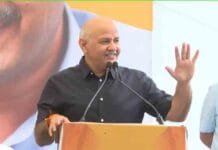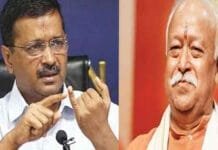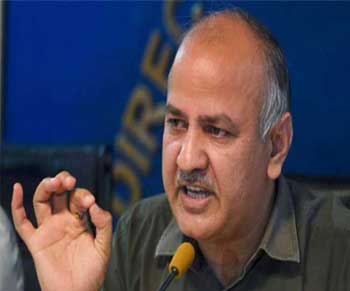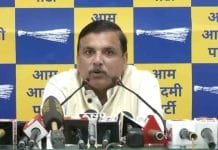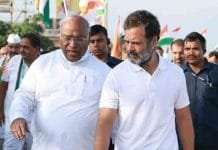On August 14, AAP leader Manish Sisodia will embark on a padyatra in Delhi, addressing the public and energizing the party’s grassroots movement ahead of upcoming political challenges.
Manish Sisodia’s August 14 Padyatra: AAP’s Strategic Push in Delhi
The political landscape in Delhi is set to witness a significant event on August 14, as Manish Sisodia, a prominent leader of the Aam Aadmi Party (AAP), prepares to engage with the citizens through a padyatra. In a move that symbolizes both defiance and connection, Sisodia’s padyatra is more than just a political gesture—it’s a statement of resilience and a commitment to the people of Delhi. This event comes at a crucial time when AAP is navigating through turbulent political waters, facing challenges from the Bharatiya Janata Party (BJP) and focusing on expanding its influence beyond Delhi. Let’s delve into the significance of this padyatra and what it means for AAP and the broader political landscape.
Manish Sisodia’s Padyatra: A Symbol of Resilience
The Man Behind the March
Manish Sisodia, the former Deputy Chief Minister of Delhi, is no stranger to the political spotlight. With a reputation built on his contributions to Delhi’s education system and governance, Sisodia has been a key player in AAP’s success story. However, his recent legal battles, stemming from allegations related to the Delhi Excise Policy scam, have put him in the center of controversy. Despite these challenges, Sisodia remains a figure of perseverance, and his padyatra on August 14 is poised to reaffirm his dedication to the people of Delhi.
The Padyatra: Connecting with the People
A padyatra, or foot march, is a time-honored method in Indian politics, often used to connect with the grassroots. For Sisodia, this padyatra is not just about covering miles—it’s about bridging the gap between the government and the governed. By walking through the streets of Delhi, he aims to listen to the concerns of the people, address their grievances, and reignite the spirit of collective action that has been the backbone of AAP’s success.
The Message to the Opposition
AAP MP Sandeep Pathak’s recent statements highlight the political undertones of this padyatra. Pathak pointed out that the BJP’s sole agenda seems to be obstructing AAP’s progress. This padyatra, therefore, is also a message to the opposition—it’s a declaration that despite legal challenges and political pressure, AAP will continue to fight, grow, and serve the people of Delhi.
AAP’s Strategic Moves: Beyond the Padyatra
Strengthening the Party Base
The padyatra is just one part of AAP’s broader strategy. In the days leading up to August 14, Sisodia is set to meet with MLAs, councilors, and other party leaders. These meetings are crucial as they serve to solidify AAP’s internal structure, ensuring that the party remains united and focused. With assembly elections on the horizon, especially in states like Haryana, AAP is leaving no stone unturned in its preparations.
Haryana Assembly Elections: A Testing Ground
Pathak’s comments about the upcoming Haryana elections are telling. Describing the elections as “exciting,” he underlines the importance of these polls as a testing ground for AAP’s strategies. With 40-50 meetings already held, AAP is gearing up to make a significant impact in Haryana, a state where its presence has traditionally been limited. Success in Haryana could propel AAP into new territories, further establishing it as a national political force.
The Role of Manish Sisodia: What’s Next?
There’s been speculation about whether Sisodia will be given a formal post in the Delhi government following his padyatra. While Pathak hinted that discussions on this matter would happen in due time, it’s clear that Sisodia’s role in the party remains pivotal. Whether or not he takes up an official position, his influence and leadership within AAP are undeniable.
The Legal Cloud: Navigating the Allegations
The Delhi Excise Policy Scam: An Overview
Manish Sisodia’s legal troubles have cast a shadow over his political career. Accused of corruption and money laundering in connection with the Delhi Excise Policy, Sisodia’s name has been embroiled in a controversy that has attracted widespread media attention. The case revolves around allegations that certain policies were manipulated to benefit specific liquor companies, with accusations pointing towards Sisodia’s involvement.
The Supreme Court’s Bail Decision
In a recent turn of events, Sisodia was granted bail by the Supreme Court, a decision that has brought a temporary reprieve. The bail, however, does not absolve him of the charges, and the case is still very much alive. Despite this, Sisodia’s supporters argue that the allegations are politically motivated, aimed at tarnishing his image and destabilizing AAP.
The Public’s Response
Public opinion on the matter is divided. While some believe in Sisodia’s innocence, viewing the charges as part of a larger political conspiracy, others remain skeptical, demanding a thorough investigation. The padyatra on August 14 will be a crucial moment for Sisodia to address these concerns directly with the people, seeking to regain their trust and support.
The Road Ahead: AAP’s Vision for Delhi
Preparing for the Next Battle: Delhi Assembly Elections
With the Delhi Assembly elections not too far off, AAP is gearing up for what could be one of its most challenging electoral battles. The padyatra is an early step in a series of planned activities aimed at mobilizing the party’s base and reaching out to undecided voters. AAP’s governance record, particularly in education, healthcare, and public services, will be its main selling points, but the shadow of Sisodia’s legal troubles could complicate the narrative.
Potential Alliances and Strategies
AAP’s approach to the upcoming elections will likely involve a mix of grassroots campaigning, strategic alliances, and a focus on governance achievements. There’s also speculation about potential alliances with other regional parties, particularly in states where AAP is looking to expand its footprint. How these alliances are forged could play a significant role in determining AAP’s success.
Sisodia’s Role in Shaping AAP’s Future
As AAP moves forward, Manish Sisodia’s role will be closely watched. Whether he takes on a new official position or continues to work behind the scenes, his influence on the party’s direction will be significant. Sisodia’s ability to navigate through his legal challenges while continuing to contribute to the party’s growth could very well define AAP’s trajectory in the coming years.
As Manish Sisodia gears up for his padyatra on August 14, the event symbolizes much more than just a political march. It’s a demonstration of AAP’s resilience, a reaffirmation of Sisodia’s connection with the people, and a strategic move in the broader context of Delhi’s political future. With assembly elections on the horizon and legal challenges still looming, AAP’s journey is far from over. However, with leaders like Sisodia at the forefront, the party continues to march forward, committed to its vision for Delhi and beyond.



